Hướng dẫn phân biệt các loại mã vạch và ứng dụng của từng loại
Mã vạch gồm có những loại nào? Ứng dụng của mã số mã vạch trong từng ngành nghề ra sao? Hãy cùng Shopply khám phá lần lượt 13 loại mã vạch một chiều và 2 loại mã vạch hai chiều. Chúng bao gồm UPC, EAN, Code 39, Code 128, ITF (2 of 5), Code 93, CodaBar, GS1 DataBar, MSI Plessey, QR, Datamatrix, PDF-417 và Aztec.
Khi phải lựa chọn mã vạch để in tem sản phẩm, phục vụ kiểm kê tồn kho, quản lý tài sản hay in mã vận đơn... thì bạn sẽ đứng trước nhiều lựa chọn. Trong bài viết này, bên cạnh việc liệt kê và nêu ra các ứng dụng của từng loại, Shopply cũng phân tích ưu và nhược điểm của chúng để bạn dễ dàng tìm ra loại mã vạch phù hợp nhất cho doanh nghiệp của mình.
| CÁC LOẠI MÃ VẠCH (MỤC LỤC) | |
| MÃ VẠCH 1D | MÃ VẠCH 2D |
| UPC | QR code |
| EAN | Datamatrix |
| Code 39 (43) | PDF417 |
| Code 128 | Aztec |
| Code 93 | |
| ITF (2 of 5) | |
| CodaBar | |
| GS1 DataBar | |
| MSI Plessey | |
| Những câu hỏi thường gặp (Hỏi-Đáp) | |
MÃ VẠCH 1D (một chiều)
Mã vạch một chiều hay còn gọi là "mã vạch 1D" là loại có các thanh mã vạch có độ mảnh/dày đa dạng được xếp thẳng đứng và song song, xen kẽ giữa chúng là những khoảng trống thưa/mau khác nhau. Khi hoạt động, máy quét mã vạch sẽ đọc các khoảng trống lần lượt từ trái qua phải hoặc ngược lại để nhận diện và giải mã "hàng rào mã vạch" thành dãy mã số. Chính vì lý do này mà nó còn có tên gọi khác là "mã vạch tuyến tính". Đây là loại mã vạch truyền thống và được ứng dụng rộng rãi với 2 định dạng phổ biến là UPC và EAN.
Mã vạch UPC
Mã vạch UPC được sử dụng để in mã vạch cho hàng tiêu dùng mà bạn có thể bắt gặp ở bất kỳ các điểm bán hàng nào trên toàn thế giới, đặc biệt ở Mỹ, Anh, Úc, New Zealand và một số nước Anh ngữ khác. Các chữ số thể hiện trên mã vạch giúp người dùng xác định được xuất xứ, màu sắc, kích thước... của sản phẩm.
Mã vạch UPC cho phép quá trình lưu thông hàng hóa được diễn ra liền mạch từ khâu sản xuất, qua các chặng phân phối rồi tới tay người tiêu dùng, thậm chí cả công đoạn đổi trả, bảo hành sản phẩm. UPC có 2 biến thể, UPC-A có 13 chữ số, trong khi đó UPC-E là một biến thể nhỏ hơn (mã vạch nén) với chỉ 8 chữ số để in lên các loại hàng hóa có kích thước khiêm tốn.
| UPC | Viết rút gọn từ cụm từ "Universal Product Codes" |
| Ký tự hỗ trợ | Chỉ gồm các ký tự số (chữ số) từ 0-9 |
| Tính năng | Được chuẩn hóa dưới dạng mã phân phối Standardized as the distribution code. |
| Cấu trúc |
|
| Biến thể | UPC-A (13 ký tự số) và UPC-C (8 ký tự số) |
| Ứng dụng |
|
| Hình ảnh | .jpg) - -.jpg) |
Mã vạch EAN
Mã vạch EAN cũng được sử dụng in mã vạch tem nhãn cho hàng tiêu dùng trên toàn thế giới, đặc biệt là ở Châu Âu. EAN trông khá giống mã vạch UPC và chỉ có một điểm khác biệt là mã vạch EAN có thêm thông tin chỉ dẫn địa lý. Trong khi EAN-13 (gồm 13 chữ số) là loại mã vạch tiêu chuẩn mặc định, thì EAN-8 (có 8 chữ số) là loại mã vạch thường được sử dụng để in lên các sản phẩm có tiết diện hạn chế, như chiếc kẹo nhỏ chẳng hạn.
- Ngành nghề ứng dụng: bán lẻ
- Các biến thể: EAN-13, EAN-8, JAN-13, ISBN, ISSN
| EAN | International Article Number |
| Ký tự hỗ trợ | Chỉ gồm các ký tự số (chữ số) từ 0-9 |
| Tính năng | Standardized as the distribution code. |
| Cấu trúc |
|
| Printable digits |
13 digits or 8 digits |
| Ứng dụng |
|
| Hình ảnh | 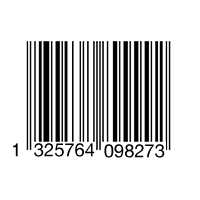 |
Mã vạch 39/43
Mã vạch 39 (mã vạch 3 trong 9) có cái tên khá độc đáo vì chúng chỉ mã hóa được 39 ký tự, tuy nhiên, phiên bản cập nhật mới nhất cho phép mã vạch này lưu giữ tới 43 ký tự. Loại mã vạch này có thể chứa được cả chữ cái, chữ số lẫn cả các ký tự đặc biệt - giống nhưng không gọn (độ nén) bằng mã vạch 128. Mã vạch 39 được dùng để in nhãn hàng hóa cho nhiều ngành nghề và đôi khi được tìm thấy trong ngành sản xuất ô-tô và lãnh vực quốc phòng (Mỹ).
- Ưu điểm: Mã vạch được nén ở mức độ đảm bảo nên có thể dễ dàng được giải mã bởi bất kỳ máy đọc mã vạch 1D thông dụng nào, hỗ trợ đủ các loại ký tự (chữ cái, chữ số, biểu tượng đặc biệt), không có quy tắc (không đòi hỏi phải có số kiểm tra) nên có thể ứng dụng linh hoạt.
- Nhược điểm: Mật độ mã vạch thưa (độ nén thấp) nên không thể dùng để in mã vạch cho những sản phẩm và tài sản có kích thước nhỏ.
| Code39 | Code 3 of 9 |
| Ký tự hỗ trợ |
|
| Tính năng |
Availability of alphabet and symbol allows indication of article numbers. |
| Cấu trúc |
|
| Biến thể | HIBC LIC, LOGMARS, MIL-STD-1189B, MIL-STD-129, MIL-STD-2073-1C, MIL-STD-129N |
| Ký tự in | In được bất kỳ loại ký tự nào |
| Ứng dụng |
|
| Hình ảnh |  |
Mã vạch 128
Barcode 128 hỗ trợ đa dạng các kiểu ký tự trong bộ ký tự ASCII 128 (bao gồm chữ cái, chữ số và ký tự đặc biệt) nhưng vẫn cho ra mã vạch có kích thước nhỏ gọn. Nhờ ưu điểm vượt trội này mà mã vạch 128 được ứng dụng đa dạng trong nhiều ngành nghề khác nhau như logistics (tem nhãn vận chuyển, mã công-ten-nơ vận tải theo sê-ri (SSCC), phân phối, bán lẻ (tem giá)...
- Ngành nghề ứng dụng: chuỗi cung ứng, logistics, phân phối, bán lẻ...
| Code39 | Code 3 of 9 |
| Ký tự hỗ trợ |
|
| Tính năng |
Availability of alphabet and symbol allows indication of article numbers. |
| Cấu trúc |
|
| Biến thể | HIBC LIC, LOGMARS, MIL-STD-1189B, MIL-STD-129, MIL-STD-2073-1C, MIL-STD-129N |
| Ký tự in | In được bất kỳ loại ký tự nào |
| Ứng dụng |
|
| Hình ảnh |  |
Mã vạch 93
Mã vạch 93 được sử dụng phổ biến trong ngành logistics để quét nhận diện, kiểm kê, xuất nhập kho các loại bao bì sản phẩm và hàng hóa
Code 93 barcodes are used in logistics to identify packages in retail inventory, label electronic components, and even provide supplementary delivery information for the Canadian Post. Like Code 39, it Code 93 comes with full ASCII support, but it improves upon and complements Code 39. It enables additional security within the barcode itself, and its high density and compact size makes its labels around 25% shorter than barcodes produced in Code 39.
- Ngành nghề ứng dụng: bán lẻ, sản xuất và logistics
- Learn more about Code 93 barcodes on the Scandit Blog.
ITF (Interleaved 2 of 5)
Mã vạch ITF (còn gọi là mã vạch xen kẽ 2 trong 5) được sử dụng để in lên bao bì (tem nhãn dán thùng) khắp nơi trên thế giới. Do mã vạch ITF có thể xử lý mã vạch có độ dung sai cao nên đặc biệt phù hợp để in trực tiếp lên thùng các tông lượn sóng hay các loại bao bì có bề mặt kém phẳng nhẵn. ITF code mã hóa được 14 chữ số và bạn có thể sử dụng được trọn bộ ký tự ASII để in ra loại mã vạch này.
- Điểm mạnh: Mã vạch 2 trong 5 hỗ trợ mã chỉ dẫn (indicator) và mã kiểm tra (check digit) nên mã vạch ITF là công cụ hữu hiệu để mã hóa thông tin hàng hóa trực tiếp lên thùng hàng nhằm phục vụ cho công tác kiểm tra ngay tại hiện trường.
- Điểm yếu: Chỉ hỗ trợ mã hóa chữ số, không hỗ trợ chữ cái và các ký tự đặc biệt.
| ITF | Mã vạch ITF (mã vạch xen kẽ 2 trong 5) |
| Ký tự hỗ trợ | |
| Tính năng |
|
| Cấu trúc | |
| Biến thể | |
| Ký tự in | |
| Ứng dụng | Ngành nghề sản xuất, thương mại (bao bì, đóng gói) |
| Hình ảnh | .jpg) |
CODABAR
Codabar barcodes are used by logistics and healthcare professionals, including U.S. blood banks, FedEx, photo labs, and libraries. Its main benefit is that it is easy to print and can be produced by any impact style printer, even a typewriter. Therefore, a user can create many Codabar codes using consecutive numbers without the use of a computer. It was designed to be readable when printed from dot matrix printers for multi-part forms. Codabar is a discrete, self-checking symbology that encodes up to 16 different characters with an additional 4 start/stop characters.
- Biến thể: Codeabar, Ames Code, NW-7, Monarch, Code 2 of 7, Rationalized Codabar, ANSI/AIM BC3-1995, USD-4
- Ngành nghề ứng dụng: Logistics, Healthcare and Education
Learn more about CodaBar barcodes on the Scandit Blog.
GS1 DATABAR
GS1 DataBar barcodes (formerly known as Reduced Space Symbology) are used by retail outlets to identify consumer coupons, produce, and perishables, as well as small objects in the healthcare industry. They are more compact than typical consumer-facing barcodes. GS1 DataBar was introduced in 2001 and became the mandated barcode type for retail coupons in the US.
- Các biến thể: GS1 DataBar Omnidirectional, Truncated, Stacked, Stacked Omnidirectional, Expanded, Expanded Stacked
- Ngành nghề ứng dụng: bán lẻ, y tế
Learn more about GS1 Databar barcodes on the Scandit Blog.
MSI PLESSEY
MSI Plessey (or Modified Plessey) barcodes are used for inventory management in retail environments, such as labeling supermarket shelves.
- Ngành nghề ứng dụng: bán lẻ
MÃ VẠCH 2D (hai chiều)
Mã vạch hai chiều hay còn gọi "mã vạch 2D" là loại mã vạch hệ thống hóa dữ liệu (ký tự thường, chữ số, ký tự đặc biệt, bộ ký tự ASCII...) theo hai chiều dọc và ngang dưới dạng hình học và hình tượng. Cách sắp xếp dữ liệu tuyến tính cũng giống như mã vạch 1D tuyến tính nhưng lưu trữ và biểu thị được nhiều thông tin hơn trên mỗi đơn vị diện tích. Mã vạch 2D có hai loại là QR Code and PDF417.
QR code
Mã vạch QR (quick response) là ma trận mã vạch 2D (2 chiều) được sử dụng hướng tới khách hàng
QR codes are 2D matrix barcodes with a strong consumer focus, often used in tracking and marketing such as advertisements, magazines, and business cards. Free to use, flexible in size, have a high fault tolerance, and have fast readability, though they can’t be read with a máy quét mã vạch laser laser scanner. QR codes support four different modes of data: numeric, alphanumeric, byte/binary, and Kanji. QR code growth began in Japan and use continues to grow today. They are public domain and free to use.
Ngành nghề ứng dụng: Retail, Entertainment and Advertising
Learn more about QR codes on the Scandit Blog.
DATAMATRIX CODE (ma trận dữ liệu)
Ma trận mã vạch (ma trận dữ liệu, datamatrix codes) là loại mã vạch 2D hay được sử dụng để in hoặc dán lên hàng hóa kích thước nhỏ, văn bản giấy tờ... Tiết diện nhỏ nhắn của chúng trở nên lý tưởng
Datamatrix codes are 2D barcodes used to label small items, goods, and documents. Their tiny footprint makes them ideal for small products in logistics and operations. In fact, the US Electronic Industries Alliance (EIA) recommends that they be used to label small electronic components. Similar to QR codes, they have high fault tolerance and fast readability.
- Biến thể: Micro-Datamatrix
- Ngành nghề ứng dụng: Sản xuất (linh kiện điện tử), bán lẻ (tem sản phẩm), hành chính công (tem nhãn văn bản, nhãn quản lý công văn giấy tờ)
Learn more about Datamatrix codes on the Scandit Blog.
PDF417
Mã vạch PDF417 (PDF-417) là một loại siêu mã vạch 2D được sử dụng để lưu lượng dữ liệu lớn như ảnh chân dung, vân tay, chữ ký, văn bản, chữ số, ký tự đặc biệt, đồ họa... Số lượng ký tự mã vạch PDF-417 có thể lưu trữ lên tới 1.1 kilobytes
codes are 2D barcodes are used in applications that require the storage of huge amounts of data, such as photographs, fingerprints, signatures, text, numbers, and graphics. They can hold over 1.1 kilobytes of machine-readable data, making them much more powerful than other 2D barcodes. Like QR codes, PDF417 barcodes are public domain and free to use.
- Biến thể: Mã vạch vụn (truncated) PDF417
- Ngành nghề ứng dụng: Logistics (mã vận đơn, mã shipping...), hành chính sự nghiệp (mã chứng minh thư nhân dân, mã thẻ căn cước công dân...)
Mã vạch AZTEC
Mã vạch Aztec là loại mã vạch 2D dùng trong lãnh vực vận tải, đặc biệt trong ngành hàng không (check-in/out hành khách, kiểm soát hành lý) hay trong các rạp chiếu phim, khu vui chơi giải trí... Đặc điểm nổi bật của loại mã vạch này là nó vẫn có thể đọc được bất chấp độ phân giải cực kém, xử lý tốt trong môi trường hạn chế ánh sáng. Vậy nên vé dù có chất lượng in tồi vẫn có thể đọc được bằng smartphone hay đầu đọc mã vạch. Hơn nữa, Aztec chiếm tiết diện nhỏ hơn bất kỳ loại ô vuông ma trận mã vạch nào vì chúng không đòi hỏi phải có viền trống không in như các loại mã vạch 2D anh em khác.
- Ưu điểm: Mã vạch Aztec có thể chứa một lượng lớn dữ liệu trong khi vẫn duy trì kích thước tương đối nhỏ, cộng thêm khả năng không đòi hỏi viền trống (vùng không in) nên cực kỳ tiết kiệm diện tích. Mã tổng kiểm (checksum) cung cấp tính năng sửa lỗi giúp ngăn chặn những kết quả sai (lỗi quét).
- Nhược điểm: Sự đa dạng về ký tự được hỗ trợ kém hơn mã vạch QRVà mặc dù những mã này không hỗ trợ cùng một loạt các ký tự như mã QR, chúng vẫn là một công cụ mạnh mẽ cho giao thông vận tải, chăm sóc sức khỏe và các ngành khác.
| Aztec | Mã vạch Aztec |
| Ký tự hỗ trợ | Chữ cái, chữ số, ký tự đặc biệt, bộ ký tự ASCII; FNC1 and ESI control codes |
| Tính năng |
Used for tickets in the transport industries, e.g. railway companies. Data can be encoded in ASCII or extended ASCII. Supports variable length data content. Different error correction levels can be defined. It has been standardized under ISO/IEC 24778. |
| Cấu trúc | Includes error correction; | Dung lượng 12 ký tự (tối thiểu) đến 3832 ký tự (tối đa) Mã kiểm tra (checksum): có (bắt buộc) Kích thước (mm): 15x15 (tối thiểu),151x151 (tối đa) |
| Biến thể | N/A |
| Ký tự in | |
| Ứng dụng | Ngành nghề ứng dụng: vận tải hành khách (hàng không, đường sắt), vận chuyển hàng hóa (vận đơn, hành lý), y tế (bệnh nhân), giải trí (rạp chiếu phim, khu vui chơi) |
| Hình ảnh | .jpg) - -.jpg) |
NHỮNG CÂU HỎI THƯỜNG GẶP (Hỏi-Đáp)
Now that you have a better understanding of the most common 1D and 2D barcode types and how they’re being used today, here are five questions you can ask yourself to find the right barcodes for your enterprise.
1. Mã vạch nào hay được xử lý bằng hệ thống POS bán hàng trong các của hàng bán lẻ?
Mã vạch UPC, EAN hoặc 128 là những mã vạch lý tưởng để thực hiện giao dịch bán hàng tại quầy thu ngân.
2. Which character set needs to be supported? Alphanumeric characters?
Code39, Code128 and QR Code
3. How much space is available on the product packaging?
EAN8, UPC-E, Code128 & Datamatrix have small form factors.
4. Which material will you print the barcode on?
ITF is great for printing barcodes on corrugated cardboard.
5. Which barcode type supports the largest amounts of data?
PDF417 codes are great for storing huge amounts of data.
Whether you’re looking into one-dimensional or two-dimensional barcodes for your business, organization or personal use, the information we’ve provided should serve as a great tool to help you select the appropriate types of barcodes for your needs.
Ngành nghề hoạt động của bạn nên sử dụng loại mã vạch nào?
Người dùng hay sử dụng máy quét mã vạch 1D để quét mã vạch 1 chiều tuyến tính, tùy theo từng đặc điểm ngành ghề mà bạn có thể sử dụng loại máy quét mã vạch đặc thù. Ví dụ trong bán lẻ thì siêu thị thường chọn mua máy đọc mã vạch 1D để bàn, shop thời trang thì lại hay dùng máy quét 1D cầm tay, các trung tâm kho vận thường ưa thích máy quét mã vạch 1D không dây...
That’s it – for now. We’ve introduced you to the most common one-dimensional and two-dimensional types of barcodes. You should now have a general understanding of where, when and how they’re being used around the world in a variety of industries and use cases. When it comes to the decision on which format to use – ask yourself the following questions:
Will the product be scanned at the point of sale in retail stores? -> UPC, EAN
Which character set needs to be supported? Alphanumeric characters? -> Code39, Code128, and QR Code.
How much space is available on the product packaging? -> EAN8, UPC-E, Code128 and Datamatrix offer smaller form factors.
Which material will you print the barcode on? -> ITF is great for printing barcodes on corrugated cardboard.
Which barcode type supports the largest amounts of data? -> PDF417 codes are great for storing huge amounts of data.
The answers to the above questions will help guide the selection of best types of barcodes for your needs. Whether you are looking to use one-dimensional or two-dimensional barcodes for you business, organization or personal use, the information we’ve provided should serve as a great tool to help you select the appropriate types of barcodes.
Once you settle on a barcode type, download the Scandit Barcode Scanner SDK for your mobile application to begin scanning all major one-dimensional and two-dimensional barcodes with unrivaled speed and accuracy from iOS or Android devices today. You can also take a look our Barcode Symbology Library page to review all the types of barcodes and their variations.
Have questions about our Barcode Scanner SDK? Are you interested in leveraging Scandit products for your business? Contact a member of our team today for support.
Khi phải lựa chọn mã vạch cho sản phẩm, để kiểm kê tồn kho hay tài sản thì bạn sẽ đối mặt với nhiều lựa chọn. Trong bài viết này, Shopply sẽ giúp bạn phân loại và tìm ra loại mã vạch bạn cần. Chúng tôi cũng nêu ra các ứng dụng phổ biến của từng loại mã vạch, ưu và nhược điểm của chúng để bạn dễ dàng thu hẹp các sự lụa chọn: perhaps your products have less than a square inch of printing space, or you might need to print on corrugated cardboard, or you need extra-secure codes. No matter what you need, we have the information you need to get started today.
Ta hãy bắt đầu bằng tổng quátLet’s begin with an overview of 13 major one-dimensional and two-dimensional barcode types. We’ll cover UPC, EAN, Code 39, Code 128, ITF (2 of 5), Code 93, CodaBar, GS1 DataBar, MSI Plessey, QR, Datamatrix, PDF417, and Aztec barcodes.
If you need more information related to specific barcode scanning use cases and Ngành nghề ứng dụng benefits, check out our free eBook Choosing the Best Barcode for your Business.
Mã vạch 1 chiều
Mã vạch một chiều, hay còn gọi là "mã vạch 1D" là thay đổi độ rộng và khoảng cách
Một chiều, hoặc 1D mã vạch, hệ thống đại diện cho dữ liệu bằng cách thay đổi độ rộng và spacings của đường song song, và có thể được gọi là tuyến tính hoặc một chiều. Chúng bao gồm một số các loại mã vạch truyền thống, hoặc tốt nhất được công nhận như các loại mã UPC và EAN.
One-dimensional, or 1D barcodes, systematically represent data by varying the widths and spacings of parallel lines, and may be referred to as linear or one-dimensional. These include some of the traditional, or most well recognized barcode types such as the UPC and EAN code types.
Mã vạch UPC 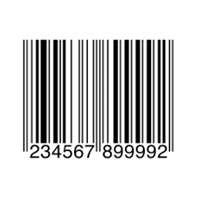
Mã vạch UPC được sử dụng để in tem nhãn mã vạch cho hàng hóa tiêu dùng trên toàn thế giới, đặc biệt ở Mỹ, Anh, Úc, New Zealand và một số nước Anh ngữ khác. Các biến thể UPC-A có 12 chữ số, trong khi đó UPC-E là một biến thể nhỏ hơn với chỉ 6 chữ số.
- Ngành nghề ứng dụng: bán lẻ
- Biến thể: UPC-A, UPC-E
Mã vạch EAN 
Mã vạch EAN cũng được sử dụng in mã vạch tem nhãn cho hàng tiêu dùng trên toàn thế giới và đặc biệt là ở Châu Âu. EAN trông khá giống mã vạch UPC và chỉ có một điểm khác biệt là mã vạch EAN có thông tin chỉ dẫn địa lý. Trong khi EAN-13 (gồm 13 chữ số) là loại mã vạch tiêu chuẩn mặc định, thì EAN-8 (có 8 chữ số) là loại mã vạch thường được sử dụng để in lên các sản phẩm có tiết diện hạn chế, như chiếc kẹo nhỏ chẳng hạn.
- Ngành nghề ứng dụng: bán lẻ
- Các biến thể: EAN-13, EAN-8, JAN-13, ISBN, ISSN
Mã vạch số 39
Mã vạch 39 (mã vạch 3 trong 9) được dùng để in nhãn hàng tiêu dùng cho nhiều ngành nghề và đôi khi được tìm thấy trong ngành sản xuất ô-tô và lãnh vực quốc phòng (Mỹ). Loại mã vạch này có thể chứa được cả chữ cái lẫn chữ số It allows the use of both digits and characters, and its name originates in the fact that it could only encode 39 characters—though in its most recent version the character set has been increased to 43. It’s similar to, but not as compact as, the Code 128 barcode, which we’ll talk about next.
- Ngành nghề ứng dụng: chế tạo ô-tô, quốc phòng
Mã vạch số 128
Mã vạch 128 nhỏ gọn nhờ mật độ mã vạch mau và dày. Nó hay được sử dụng để in tem nhãn vận chuyển logistics Code 128 barcodes are compact, high-density codes used in logistics and transportation industries for ordering and distribution. They’re geared toward non-POS products, like when supply chain applications label units with serial shipping container codes (SSCC). Code 128 barcodes are powerful and can store diversified information because they support any character of the ASCII 128 character set.
- Ngành nghề ứng dụng: chuỗi cung ứng
ITF (Interleaved 2 OF 5)
ITF (or Interleaved 2 of 5) barcodes are used to label packaging materials across the globe in tem nhãn dán thùng. Since they can deal with high printing tolerances, they are good for printing on corrugated cardboard. ITF barcodes encode 14 numeric digits and use the full ASCII set.
- Ngành nghề ứng dụng: bao bì, đóng gói
Mã vạch số 93
Code 93 barcodes are used in logistics to identify packages in retail inventory, label electronic components, and even provide supplementary delivery information for the Canadian Post. Like Code 39, it Code 93 comes with full ASCII support, but it improves upon and complements Code 39. It enables additional security within the barcode itself, and its high density and compact size makes its labels around 25% shorter than barcodes produced in Code 39.
- Ngành nghề ứng dụng: bán lẻ, sản xuất và logistics
- Learn more about Code 93 barcodes on the Scandit Blog.
CODABAR
Codabar barcodes are used by logistics and healthcare professionals, including U.S. blood banks, FedEx, photo labs, and libraries. Its main benefit is that it is easy to print and can be produced by any impact style printer, even a typewriter. Therefore, a user can create many Codabar codes using consecutive numbers without the use of a computer. It was designed to be readable when printed from dot matrix printers for multi-part forms. Codabar is a discrete, self-checking symbology that encodes up to 16 different characters with an additional 4 start/stop characters.
- Biến thể: Codeabar, Ames Code, NW-7, Monarch, Code 2 of 7, Rationalized Codabar, ANSI/AIM BC3-1995, USD-4
- Ngành nghề ứng dụng: Logistics, Healthcare and Education
Learn more about CodaBar barcodes on the Scandit Blog.
GS1 DATABAR
GS1 DataBar barcodes (formerly known as Reduced Space Symbology) are used by retail outlets to identify consumer coupons, produce, and perishables, as well as small objects in the healthcare industry. They are more compact than typical consumer-facing barcodes. GS1 DataBar was introduced in 2001 and became the mandated barcode type for retail coupons in the US.
- Các biến thể: GS1 DataBar Omnidirectional, Truncated, Stacked, Stacked Omnidirectional, Expanded, Expanded Stacked
- Ngành nghề ứng dụng: bán lẻ, y tế
Learn more about GS1 Databar barcodes on the Scandit Blog.
MSI PLESSEY
MSI Plessey (or Modified Plessey) barcodes are used for inventory management in retail environments, such as labeling supermarket shelves.
- Ngành nghề ứng dụng: bán lẻ
Mã vạch 2 chiều
Mã vạch hai chiều ("mã vạch 2D")Two-dimensional, or 2D barcodes, systematically represent data using two-dimensional symbols and shapes. They are similar to a linear 1D barcode, but can represent more data per unit area. These include some newer barcode types such as the QR Code and PDF417 code types.
QR CODE
QR codes are 2D matrix barcodes with a strong consumer focus, often used in tracking and marketing such as advertisements, magazines, and business cards. Free to use, flexible in size, have a high fault tolerance, and have fast readability, though they can’t be read with a máy quét mã vạch laser laser scanner. QR codes support four different modes of data: numeric, alphanumeric, byte/binary, and Kanji. QR code growth began in Japan and use continues to grow today. They are public domain and free to use.
Ngành nghề ứng dụng: Retail, Entertainment and Advertising
Learn more about QR codes on the Scandit Blog.
DATAMATRIX CODE
Datamatrix codes are 2D barcodes used to label small items, goods, and documents. Their tiny footprint makes them ideal for small products in logistics and operations. In fact, the US Electronic Industries Alliance (EIA) recommends that they be used to label small electronic components. Similar to QR codes, they have high fault tolerance and fast readability.
- Biến thể: Micro-Datamatrix
- Ngành nghề ứng dụng: Electronics, Retail and Government
Learn more about Datamatrix codes on the Scandit Blog.
PDF417
PDF417 codes are 2D barcodes are used in applications that require the storage of huge amounts of data, such as photographs, fingerprints, signatures, text, numbers, and graphics. They can hold over 1.1 kilobytes of machine-readable data, making them much more powerful than other 2D barcodes. Like QR codes, PDF417 barcodes are public domain and free to use.
- Biến thể: Truncated PDF417
- Ngành nghề ứng dụng: Logistics and Government
AZTEC
Aztec codes are 2D barcodes used by the transportation Ngành nghề ứng dụng, particularly for tickets and airline boarding passes. The barcodes can still be decoded even if they have bad resolution, making them useful both when tickets are printed poorly and when they’re presented on a phone. In addition, they can take up less space than other matrix barcodes because they don’t require a surrounding blank “quiet zone,” unlike some other 2D barcode types.
- Ngành nghề ứng dụng: Transportation
- Learn more about Aztec codes on the Scandit Blog.
That’s it – for now. We’ve introduced you to the most common one-dimensional and two-dimensional types of barcodes. You should now have a general understanding of where, when and how they’re being used around the world in a variety of industries and use cases. When it comes to the decision on which format to use – ask yourself the following questions:
Will the product be scanned at the point of sale in retail stores? -> UPC, EAN
Which character set needs to be supported? Alphanumeric characters? -> Code39, Code128, and QR Code.
How much space is available on the product packaging? -> EAN8, UPC-E, Code128 and Datamatrix offer smaller form factors.
Which material will you print the barcode on? -> ITF is great for printing barcodes on corrugated cardboard.
Which barcode type supports the largest amounts of data? -> PDF417 codes are great for storing huge amounts of data.
The answers to the above questions will help guide the selection of best types of barcodes for your needs. Whether you are looking to use one-dimensional or two-dimensional barcodes for you business, organization or personal use, the information we’ve provided should serve as a great tool to help you select the appropriate types of barcodes.
Once you settle on a barcode type, download the Scandit Barcode Scanner SDK for your mobile application to begin scanning all major one-dimensional and two-dimensional barcodes with unrivaled speed and accuracy from iOS or Android devices today. You can also take a look our Barcode Symbology Library page to review all the types of barcodes and their variations.
Have questions about our Barcode Scanner SDK? Are you interested in leveraging Scandit products for your business? Contact a member of our team today for support.
| Name | EAN,UPC | ITF | CODE39 | CODABAR | CODE128 |
|---|---|---|---|---|---|
Symbol |
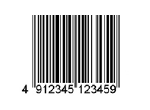 |
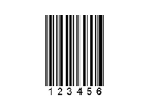 |
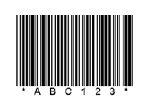 |
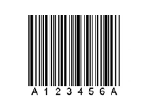 |
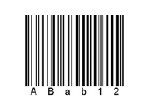 |
| Character type |
|
|
|
|
|
| Features |
|
|
|
|
|
| Printable digits |
13 digits or 8 digits | Even digits only | Any digits | Any digits | Any digits |
| Bar structure |
|
|
|
|
|
| Application performance |
|
|
|
|
|
Hãy cùng Shopply khám phá lần lượt 13 loại mã vạch một chiều và 2 loại mã vạch hai chiều. Chúng bao gồm UPC, EAN, Code 39, Code 128, ITF (2 of 5), Code 93, CodaBar, GS1 DataBar, MSI Plessey, QR, Datamatrix, PDF417 và Aztec.
Yêu cầu tư vấn
Bài viết liên quan
Máy in mã vạch, Máy in mã vạch công nghiệp, Máy in mã vạch để bàn, Máy đọc mã vạch, Mực in mã vạch, Tem nhãn mã vạch
Sản phẩm liên quan
Máy cuốn tem nhãn tự động Godex T20 (178mm)
6.950.000đ
Máy đọc mã vạch Zebra DS2208 (2D, có dây)
2.280.000đ
Máy in mã vạch Zebra ZT410 (203, 300, 600dpi)
20.000.000đ
Máy đọc mã vạch Zebra DS8178 (không dây, 2D)
7.350.000đ
Máy in mã vạch GoDEX EZ 2050 (203dpi, U+S+E)
14.950.000đ
Máy in tem nhãn mã vạch mini TSC TDM-20
6.650.000đ
Máy in mã vạch Zebra GC420t (203dpi, USP)
4.250.000đ
Máy in tem mã vạch Honeywell PC42t (203dpi)
5.150.000đ
Máy đọc mã vạch Zebra DS2278 (2D, không dây)
4.450.000đ
-166x40.png)
-200x200.jpg)
-200x200.jpg)
-200x200.jpg)
-200x200.jpg)
-200x200.jpg)
-200x200.jpg)
-200x200.jpg)
-200x200.jpg)
-200x200.jpg)
-200x200.jpg)
-200x200.jpg)
-200x200.jpg)
-200x200.jpg)
-200x200.jpg)
-200x200.jpg)
-200x200.jpg)
-200x200.jpg)
-200x200.jpg)
-200x200.jpg)
-200x200.jpg)
-200x200.jpg)
-200x200.png)
-200x200.jpg)
-200x200.png)
-200x200.jpg)
-200x200.png)
-200x200.png)
-200x200.jpeg)
-200x200.jpg)
-200x200.jpg)
-200x200.jpg)
-200x200.jpg)
-200x200.jpg)